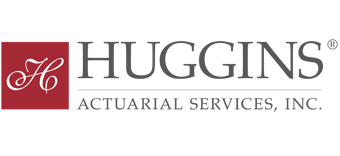Huggins has the resources and experience to understand the problem to be solved, prepare the data for analysis, and build the predictive model.
What is Predictive Analytics?
Predictive analytics covers a variety of statistical techniques including data mining, predictive modeling, and machine learning. All of the techniques analyze current and historical facts to make predictions about future or otherwise unknown events. These statistical techniques identify deep, important, and actionable relationships that may not be apparent using simpler techniques.
What is the value of Predictive Analytics?
Firms are using predictive analytics to help solve difficult problems and uncover new opportunities. A common use is in claims and reserving analyses, which can help the firm avoid paying fraudulent claims or paying too much. Improving the accuracy of reserving is another use, which can help avoid adverse development.
Predictive models also have many uses in underwriting and product pricing. The models can be used to improve profitability, target marketing efforts, and avoid adverse selection.
How can Huggins help?
Predictive Analytics requires a team approach. We have the resources and experience to understand the problem to be solved, prepare the data for analysis, build and use the predictive model. We also have the expertise to interpret results, present the findings clearly. and realize the value of predictive modeling.
Finding, assembling, cleaning, and preparing data are key tasks of every predictive modeling project. Often multiple internal databases are used, such as policy and claims data. Multiple sources of external data may also be used. Data-related tasks can take more than half of the project’s time. Huggins analysts have extensive data quality and data management experience tackling data tasks correctly and efficiently.
Ask a Huggins consultant about how Predictive Analytics can help your company make better decisions.
Fraud Detection
Identification of potentially questionable claims can help you minimize claims cost. Detailed claims data can be used to predict the likelihood that a specific claim is questionable and should be investigated. For example, the model may flag a claim because the requested damages far exceed legitimate claims with similar characteristics. The predictive model yields a claim score that is used to prioritize resources applied to manage claims, to quickly pay legitimate claims, and to refer potentially questionable claims to an expert investigator.
Litigation Potential
Claims that are litigated tend to have a significantly higher cost. A model that predicts the likelihood that a claim will be litigated can be used to proactively address the issues that lead to litigation and cost escalation. The model can use historical data on litigated claims to build a model to predict litigation potential on open claims.
Subrogation and Second Injury Fund Potential
Significant recoveries, and reduction in your claims cost, can often be obtained through subrogation or submission of claims to a workers’ compensation second injury fund (“SIF”). The model can use characteristics of the claimant and accident to predict which claims are most likely to produce recoveries.
Claims Leakage
Claims leakage occurs when a claim is paid that was not eligible for payment under the policy terms. Leakage also occurs when a claim is paid for an amount higher than what policy terms or claim characteristics indicate. The reasons leakage occurs in the first place includes fraud, litigation, not checking the payment against policy limits, not collecting reinsurance owed, ineffective management of defense costs, or not checking medical payments against a medical fee schedule. Other reasons exist.
Historical claim data can be used to create a model to predict the cost of individual claims. Expert judgment is also used. When the actual cost of a claim differs significantly from predicted the reasons for the departure can be investigated.
Benchmarking or Predicting Claim Severity
Historical claim and policy data are used to create a model to predict the severity, or severity range, of individual claims. The prediction can be used to set an initial case reserve, for benchmarking claims, or for smartly assigning complex claims to experienced adjusters.
Underwriting Analyses
A predictive model can be used to assign individual applicants a score reflecting their unique characteristics. The score is used in categorizing (aka tiering) applicants based on their attractiveness, such as profit potential or alignment with marketing plans. Tiering enables a company to improve risk selection.
Pricing Analyses
Predictive models can be used to supplement traditional methods for pricing insurance policies. Policy, claim, and external data are used to build a model. The resulting model then uses applicant-specific characteristics to predict loss ratio, pure premium, or claim frequency and severity. The prediction for the policy at-hand is used to adjust the traditional premium leading to improved profitability.
The Huggins Advantage
Our firm’s philosophy centers on our commitment to the highest level of quality service delivered by quality people. Our long tradition of providing responsive, technical excellence to our clients’ needs through an integrated team approach requires that we focus on quality in every aspect of every engagement.



